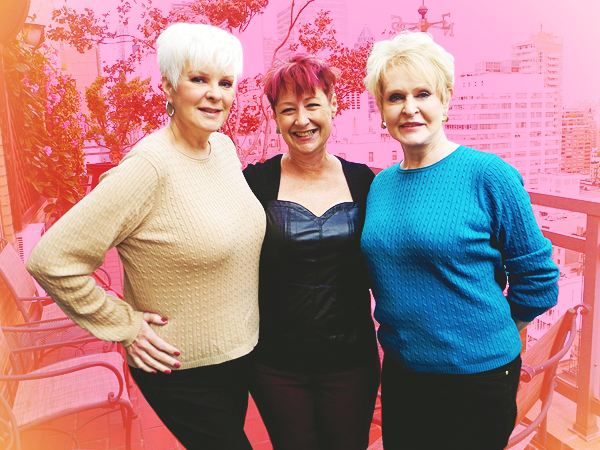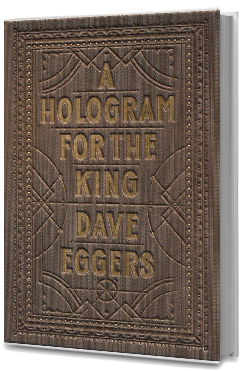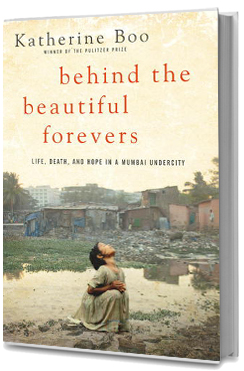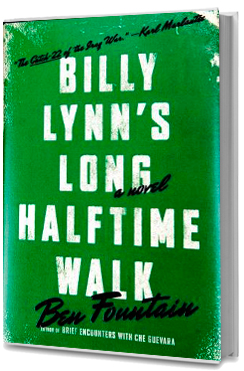

 ‘Twas the week before Thanksgiving and there was turkey to brine, vegetables to chop and pies to bake. Didn’t we just do this?
‘Twas the week before Thanksgiving and there was turkey to brine, vegetables to chop and pies to bake. Didn’t we just do this?
Whether we have passed the fork to an FUF hostess or still host Turkey Day dinners in our own homes, cooking and food become top of mind this week. For those doing the hosting–the supermarket scramble, labor-intensive prep, mad rush to get the dishes from oven to table in time (and all at the same time), is enough to leave a bitter taste in the mouths of even the most passionate FOFoodies. For those of us who are guests to our Thanksgiving feasts, we still have to navigate busy grocery stores, stand on bakery lines and interpret our hosts subtle hints or in some cases, very particular instructions on what to bring.
Enter Annette Gallagher Weisman. Annette is a freelance writer, book critic and award-winning essayist. This week, she shares four scrumptious cookbooks, two fabulous chef memoirs, a marvelous new book about wine and a book of witty personal essays on the history of food trends. Just when you were about to put down that spatula and call it quits–these 8 books will get you excited about cooking, again.

 Talking With My Mouth Full: My Life as Professional Eater by Gail Simmons
Talking With My Mouth Full: My Life as Professional Eater by Gail Simmons
Hyperion, 288 pages.
Gail Simmons, currently the host of Top Chef: Just Desserts and the Special Projects Director at Food & Wine magazine, has been a permanent judge on Bravo’s Top Chef, and traveled worldwide to taste, judge and experience a mind-boggling array of foods. The subheading for her memoir is “My Life as a Professional Eater.” How does one become that, you may ask? Simmons says she had no idea after graduating from college what career path to follow. So, she made a short list of things she loved to do and came up with four: Eat. Write. Travel. Cook. Then she connected the dots and followed the food line. Ingenious.
She left Canada, where she’d grown up, attended culinary school in New York, and worked on the line briefly at two top New York restaurants, Le Cirque 2000 and Vong. She also became an assistant to eminent food critic, Jeffrey Steingarten. Simmons admits she was fortunate; she had a smooth path without many obstacles, in work or in life, to hinder her from reaching the top of her profession. Today, when Gail Simmons talks about food, people listen. In her memoir, she is personable, telling us anecdotes about her Jewish background in Toronto, her marriage to her husband, Jeremy, and other life experiences, but her main focus is food. In a simple and frank manner, she gives us the story of what it’s like to work behind the scenes of the culinary world. If you want a step by step guide as to how she earned her food stripes, with an overview of the flourishing food biz, this book is for you.

 Restaurant Man by Joe Bastianich
Restaurant Man by Joe Bastianich
Viking, 288 pages.
Perhaps, like me, you saw Joe Bastianch along with Gail Simmons recently on Dr. Oz. I was struck by the quiet-spoken, calm demeanor of this trim, elegant bald-pated restaurateur. You’d never think he’s the same one who uses the F word throughout his memoir. Like Anthony Bourdain, author of food classic Kitchen Confidential, Bastianich has an in-your-face style of writing: a tell-it-like-it-is replete with colorful language.
Joe Bastianich’s father, Felice, ran a family restaurant in Queens, his mother, Lidia, is a well known chef and author of several cookbooks. Joe himself, partnered with Mario Battali to found the famed Babbo restaurant in New York together, going on to participate with him in ventures like Eataly, an Italian megamall of artisanal food and wine and several boutique restaurants and shops. He reveals all the nitty gritty details about running a restaurant, the day-to-day stuff, the costs and how to cut them, the staff, and the food and how wine is marked up. In fact, there’s a great deal about wine. Not to mention a year spent in the vineyards of Italy where Joe, post stint on Wall Street, learned to make wine. Bastianich looks fit (he lost a considerable amount of weight marathon training). Yet, he says he drinks about a bottle of wine a day!
Bastianich also offers many revelatory anecdotes about celebrity diners. Entertaining and informative, this is the real dish about what it’s like to be in the restaurant business today.

 A Table At Le Cirque: Stories and Recipes From New York’s Most Legendary Restaurant by Sirio Maggioni and Pamela Fiori
A Table At Le Cirque: Stories and Recipes From New York’s Most Legendary Restaurant by Sirio Maggioni and Pamela Fiori
Flammarian, 256 pages.
It is a fact: Le Cirque is a fabulous restaurant. It has been in New York in three different locations, since 1974. It opened in the Mayfair Hotel on East 65th Street, in 1974, moving from there to the Villard Houses in the New York Palace Hotel in 1997. Then, in 2006 it moved again to its current more contemporary home at 1 Beacon Court, across from the Bloomberg Tower, where a formal jacket is not needed at the bar and a more casual menu is offered.
If you don’t live in Manhattan or can’t afford to dine there, this book will make you feel as though you know the restaurant well, are familiar with its cuisine and haven’t missed out on the dish about the celebrities, powerbrokers and socialites who are regulars. A Table at Le Cirque is not a cookbook, rather a story book with prized recipes.
Owner Sirio Maccioni is the ringmaster of “The Circus” as well as the ultimate meeter and greeter. Page after page of fantastic photographs show him welcoming innumerable stars and notables including Jackie Onassis, Sophia Loren, Andy Warhol, The Reagans, Danny Kaye, Barbara Walters and royalty from many countries, even Pope John Paul ll. No matter how famous the person, if you think you saw them at Le Cirque, you did.
While Maccioni used to be a one-man show, his co-author Pamela Fiori says his three sons Mario, Marco and Mauro now relieve the pressure of running this restaurant by weighing in on every major decision. Fiori, former editor of Travel and Leisure and Town & Country is an elegant woman who knows a thing or two about spectacular restaurants. She speaks fondly of Maccioni, Le Cirque’s almost 40-year history in its three different locations, and the fact that until now Sirio has never published a cookbook.
About half way through the book we are treated to the recipes of the chefs who have been part of the Le Cirque family, from Jean Vergnes, co-owner initially, to the current chef Olivier Reginensi, and those in between including Daniel Boulud and David Bouley. These treasured recipes such as Black Tie Scallops, Bouillabaisse Le Cirque, and Spaghetti Primavera (still an off-menu request) are accompanied by full color photographs.

 Ricky Lauren The Hamptons: Food, Family and History by Ricky Lauren
Ricky Lauren The Hamptons: Food, Family and History by Ricky Lauren
Wiley, 256 pages
Ricky Lauren is the kind of fab woman many of us would like to be. After all, she is brilliant—an author, photographer, artist and psychotherapist. She is also beautiful and married to a handsome man, Ralph Lauren, the arbiter of American good taste. It’s a given any book she writes will exude style and grace.
In this, Lauren’s fourth book, she depicts through family recipes the homes she and her husband have lived in over the past forty years: in Southampton, Amagansett, East Hampton and Montauk. But, the book is not only a collection of recipes by one of its celebrated residents; you will also find inside essays about the history of the area, its architecture, culture and lifestyle. If you’ve never been to the Hamptons you will enjoy this exclusive resort vicariously. If you have, you will relate through these culinary scenes the appeal that attracts so many to the Hamptons way of life.
Lauren describes her homes, such as the one in East Hampton, in a way that captures their relaxed lifestyle. “The patio outside our living room had a low wall of flat stones around a rectangular terrace. The wall was an excellent place for perching. To turn the patio into a lounging area, we placed denim-covered mats against the inner walls and added tray tables. To this we added a multitude of bright-colored throw pillows. We often picnicked there under huge Italian Veronese marketplace umbrellas. If it rained, we could pile everything indoors to suggest sofas in an empty corner of the living room.”
The recipes are easy to follow and focus on healthy and colorful ingredients. They include Morning Smoothies, Cinnamon and Vanilla Challah French Toast, David’s Pea Soup, a Hamptons Beach Party Barbeque, Seafood Frittata of Shrimp Scallops and Crabmeat, Dylan’s Sunshine Salad, Nana’s Hungarian Beef Goulash, her Rum Laced Brownies, a Strawberry Soufflé along with Andrew and Ricky’s Chocolate Mousse are all worth the small effort to prepare. The full page color photographs of each recipe look like culinary art.
The Hamptons by Ricky Lauren would make an ideal gift for anyone who is hunkering down for the winter and dreaming of summer by the sea.

 Lunch in Provence by Rachel McKenna and Jean-Andre Charial
Lunch in Provence by Rachel McKenna and Jean-Andre Charial
Flammarian, 232 pages/245 color illustrations
The cover photograph of a weathered gray wooden table, set with just three pieces of old silverware conveys the feeling from the outset that simplicity equals beauty. Such evocative images by Rachel McKenna and the clear layout of recipes have a calming effect. It’s as if we are transported to Provence and held in a state of reverie; life slows down and so do we just by turning the pages.
The introduction is written by award-winning American chef and author, Patricia Wells, who herself has homes in Paris and Provence. But the star of the book is a French chef, Jean-Andre Charial, owner/winemaker of several Michelin-starred restaurants in Provence, the most celebrated being Oustau de Baumaniere. Throughout the book he gives opinions about life and cooking and the importance of fresh ingredients.“The best food is the simplest–it should just be an expression of the produce and then it is tres bon.”
There are 35 recipes, one to a page, with full color photographs alongside typical Provencal dishes such as grilled sea bass with ratatouille and leg of lamb rubbed with rosemary and anchovies. The text is laid out sparingly, and includes quotes from famous authors and chefs, so you can read it easily with time to ponder over each one.
What this book does best is convey the sensibility of the region along with gorgeous images of the French countryside and its produce. If you’ve been to Provence it will evoke happy memories. If you haven’t, you’ll feel like you have. And your favorite Francophile will appreciate the gift of having Lunch in Provence, too.

 The New York Times Book of Wine: More Than 30 Years of Vintage Writing edited by Howard G. Goldberg
The New York Times Book of Wine: More Than 30 Years of Vintage Writing edited by Howard G. Goldberg
Sterling Epicure, 592 pages
Overheard at a wine tasting, “Hmm it has an amusing bouquet with just a hint of
apple strudel, a lively torso and long legs.” Do you a) concur, b) laugh or c) vacate the premises?
While the above comment is fictitious, it is not far off from some of the creative descriptions one will hear after a person you barely know has sniffed, swirled and tasted a wine you thought was just okay. But the comment is perplexing. Is it good or bad? Do you care? Wouldn’t it be fun to respond with some enigmatic repartee?
Kick lack of knowledge and pretension to the curb, and buy yourself The New York Times Book of Wine. Encompassing 30 years of vintage writing by Eric Asimov, Frank J. Prial, Florence Fabricant, Frank Bruni, and as they say, many more, all in the capable hands of esteemed editor Howard G. Goldberg, this book is a treasure chest filled with opinions about wine.
The best way to discover something, I find, is by osmosis. Whether it is watching your mother cook as a child or listening to a bedtime story with a message, the process becomes effortless. You’ll find 156 articles in this book, which are just like stories to be read individually, in a cluster, or out of sequence at bedtime or any other time. They are by no means dry tales, but interesting, useful and often funny accounts of every aspect of the wine biz.
Intriguing titles like “Affairs to Remember,” “Pairing Wine with Chinese Food,” “Why Red Wine and Cheese Have Stopped Going Steady,” “A Sommeliers Little Secret: The Microwave, and What You Drink with What You Eat,” make it hard to stop reading. I’d love to quote from many of these essays, but by the time I finished we’d be up all night. However, I’ll leave you with a quote from “Words, Words, Words” near the beginning of the book. In this humorous piece by Frank J. Prial he cuts through the clutter of what he terms “winespeak.” This is one of many actual descriptions Prial found on a restaurant’s wine list, in this case about Gevrey-Chambertin, “that is fathoms deep and as pleasingly prickly as a kitten’s tongue.”
Despite the kitten reference, Gevry Chambertin remains one of my favorite wines. But don’t buy this book just to learn something. Buy it for the love of wine and a good story.

 Martha’s Entertaining: A Year of Celebrations by Martha Stewart
Martha’s Entertaining: A Year of Celebrations by Martha Stewart
Potter, 432 pages.
This one by lifestyle maven Martha Stewart isn’t new–it came out last year–but if you don’t already own it, you ought to. Or, at least give it to a good friend. And considering I still have Martha’s first Entertaining book that came out in 1982, it’s safe to say this bigger and better version will last a while.
What Stewart brings to the table is perfection. No matter what the time of day, breakfast, lunch or dinner, whether a picnic at sea, an ice cream social, bridal shower, Fourth of July barbeque, or Thanksgiving dinner, Martha has you covered with dishes like Lobster Sheperd’s pie, Wild mushroom lasagna, desserts to die for such as Pavlova, and special drinks, such as Elderflower martinis. And somewhere in the middle you’ll find a glossary of peonies. Trust Martha to think of that.
Weighing in at a hefty four pounds, this book belongs on a coffee table. It’s the kind of book you “ooh” and “ahh” over, because the photographs by Frédéric Lagrange and others are so beautiful.
There are idyllic scenes, on a yacht, in the city, in the country, of houses, flowers, patios, and, of course, dishes so tantalizing you want to eat the pages. Though, in fact, one almost forgets about recipes until you come across them toward the back. Martha’s personal chef who compiled them is none other than Pierre Schaedelin, a former chef at Le Cirque, so you know these dishes don’t just look good, they will taste good, too.
One photo shows Martha sitting next to Billy Collins, who is standing and reading, presumably a poem. Nothing like having a former poet laureate for dinner! Perhaps it is an ode to Martha for a lovely meal. And why not? I think I’ll write a poem myself to thank her for this book.

 The Table Comes First: Family, France and the Meaning of Food by Adam Gopnick
The Table Comes First: Family, France and the Meaning of Food by Adam Gopnick
Vintage, 336 pages.
Quickly: if you could ask anyone to a dinner party, who would it be? The first person who comes to my mind is playwright Oscar Wilde, famous for witticism such as “Always forgive your enemies; nothing annoys them so much,” and even on his deathbed quipped “Either that wallpaper has to go, or I will.” Unfortunately, Oscar’s not around anymore. But another witty man and a know-it-all—in a good way–is–Adam Gopnick. Longtime writer for The New Yorker Gopnik writes on any topic with erudition, yet his work is always punctuated by wit and verve.
His latest book, The Table Comes First has just come out in paperback, an ideal gift for the true foodie in your life. From the first restaurant in—where else–France, to famous names in gastronomy through the ages, to current day food trends, localism, organic farming, sustainable living, you name it, Gopnick explores it all. Call it a conversation with the reader about the meaning of food.
“The point of eating is to slow down life long enough to promote what Brillat-Savarin called, with simple charm, good cheer. It doesn’t just take time, but makes time—carves out evenings, memories.”
He also discusses food throughout the book via email letters to an art and food critic Elizabeth Pennell, who died in 1936, as if she were a confidante alive today participating in this epistolary relationship.
“Dear Elizabeth: I have read and reread your chapter on the perfect dinner party many times. And I like it. How hard we have to work to make perfection, and yet when it happens, the truth is that it falls on us like grace.”
Dinner parties are for guests who make us laugh and cry, who say things like, “Either that wallpaper has to go or I will.” And we all love being in the company of a person like that, even if, for those of us who don’t know Gopnick personally, we only get to be in his company while perusing the pages of his thought-provoking book.

images: someecards.com









 dead by the time we finished. So if we’re going to read—and heed—any of these books, we should make our choices pretty darn carefully.
dead by the time we finished. So if we’re going to read—and heed—any of these books, we should make our choices pretty darn carefully. 

















